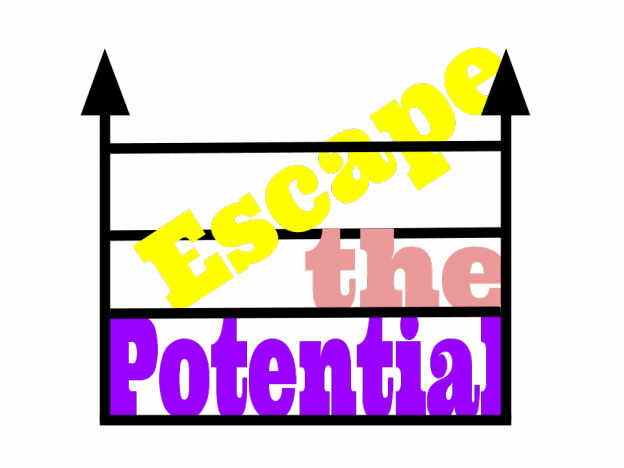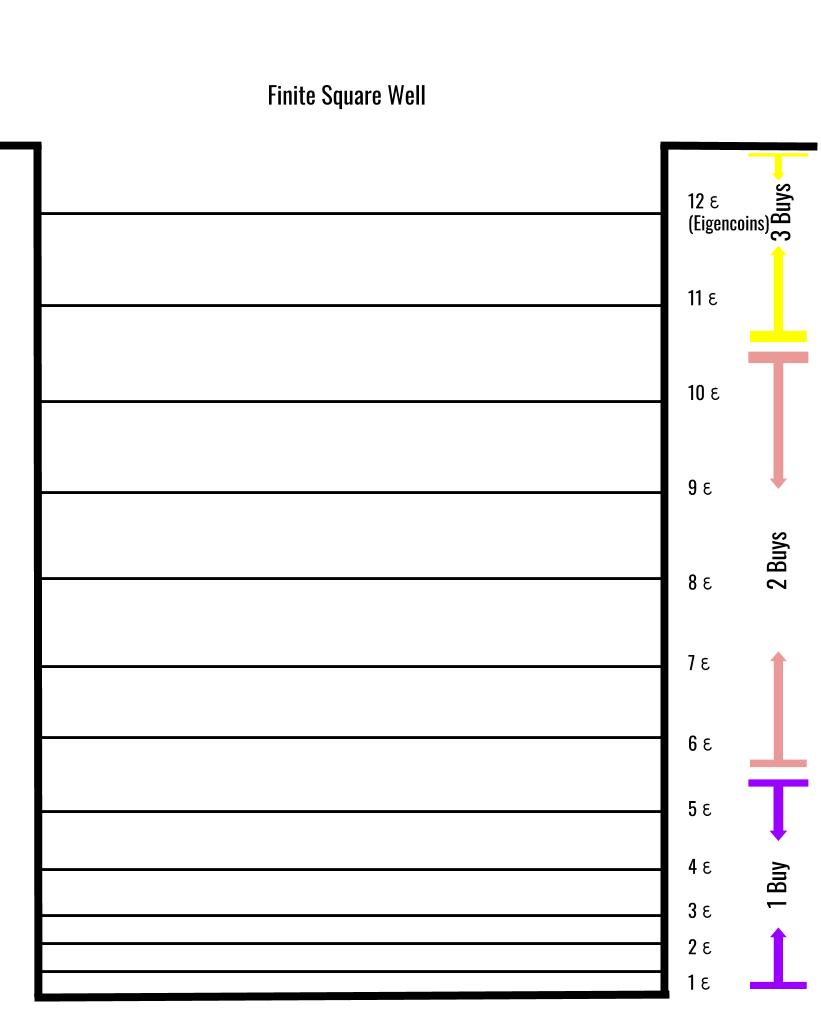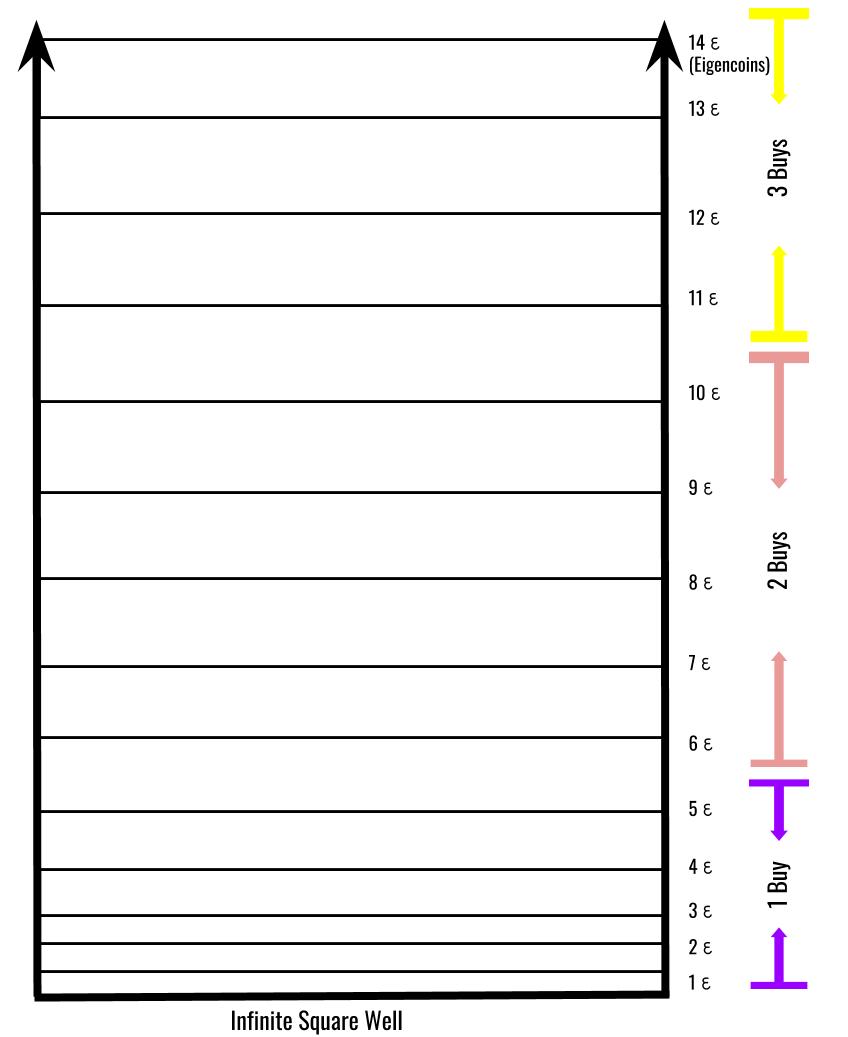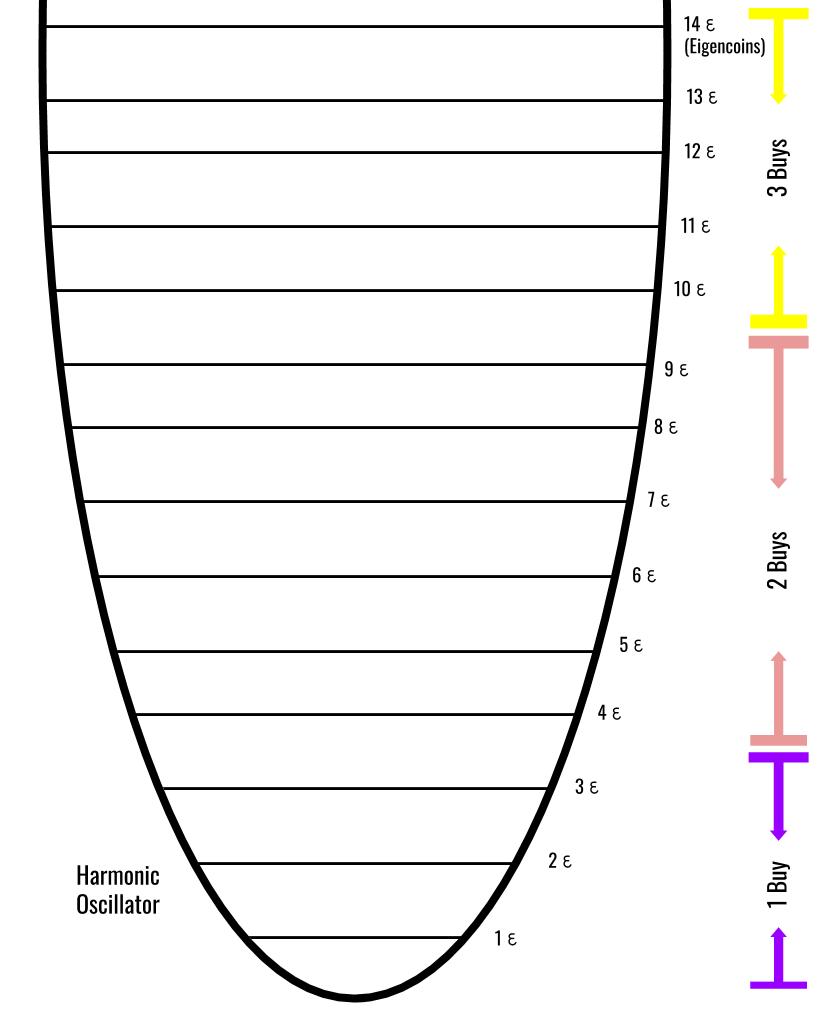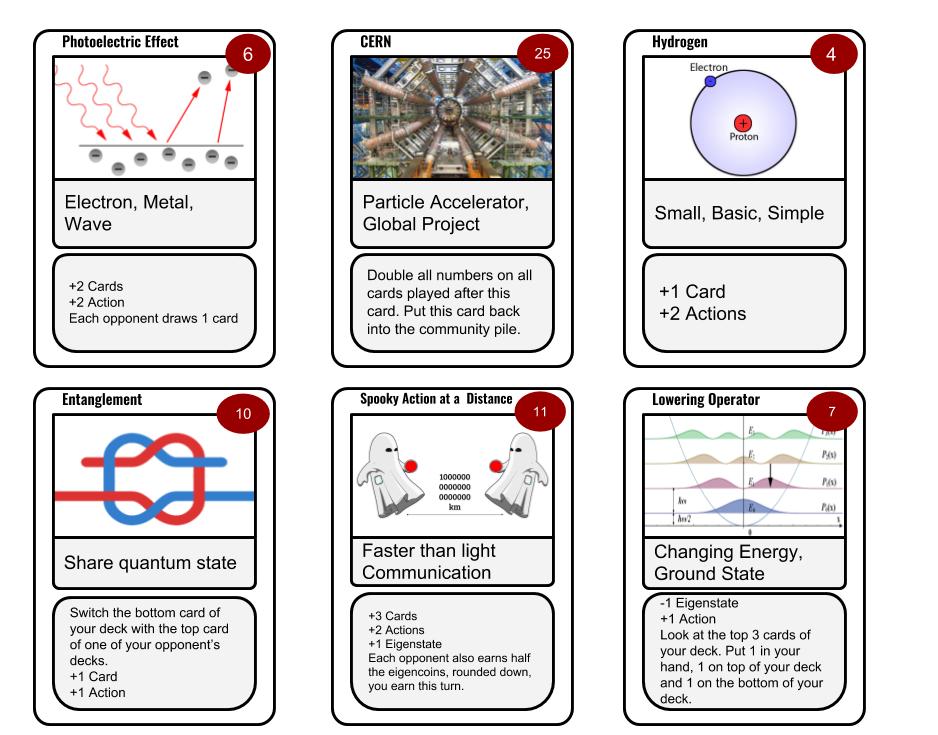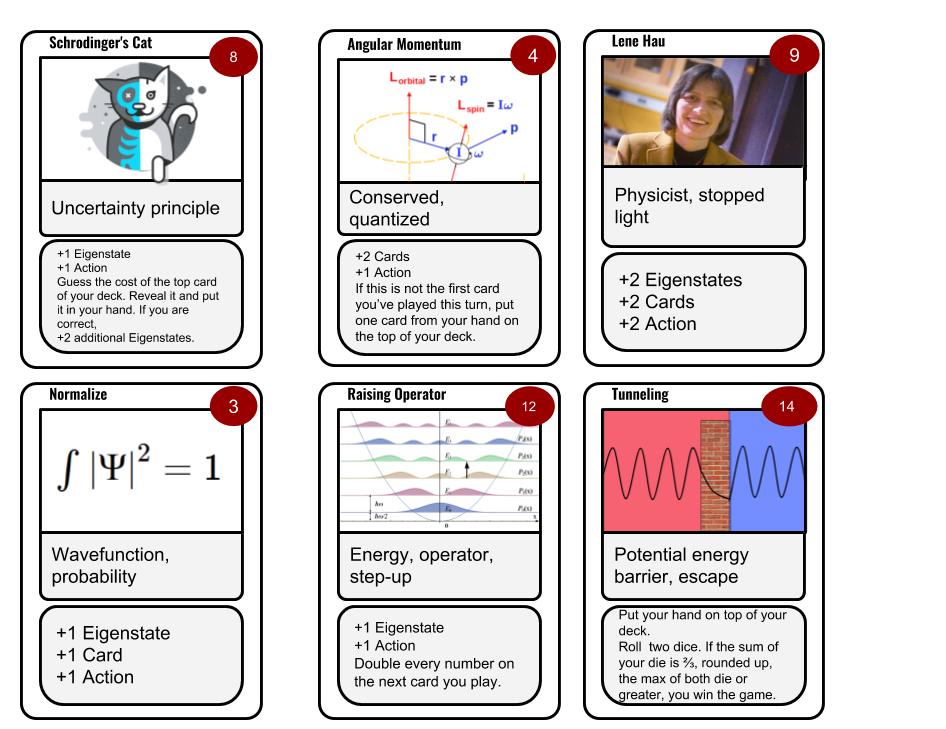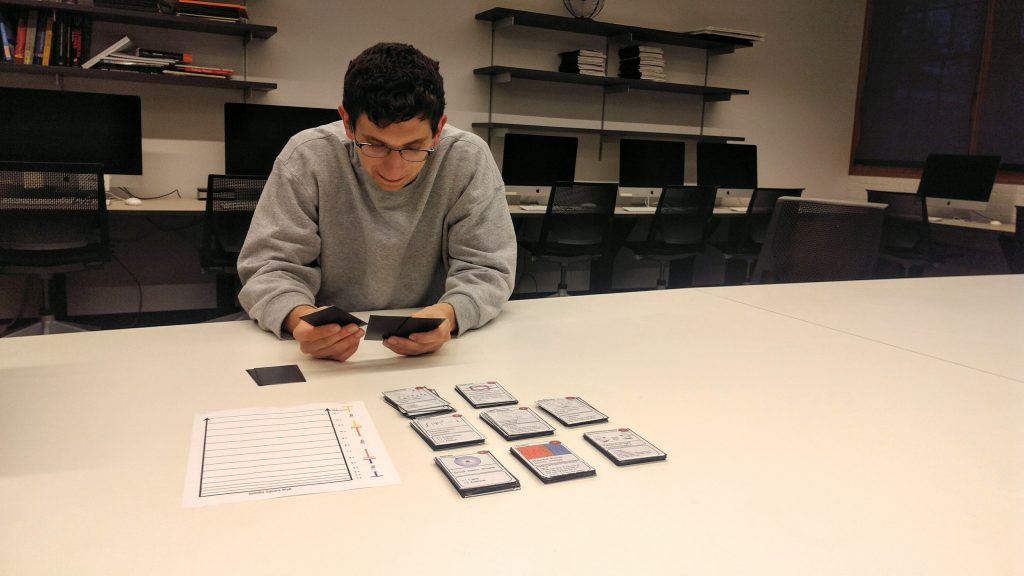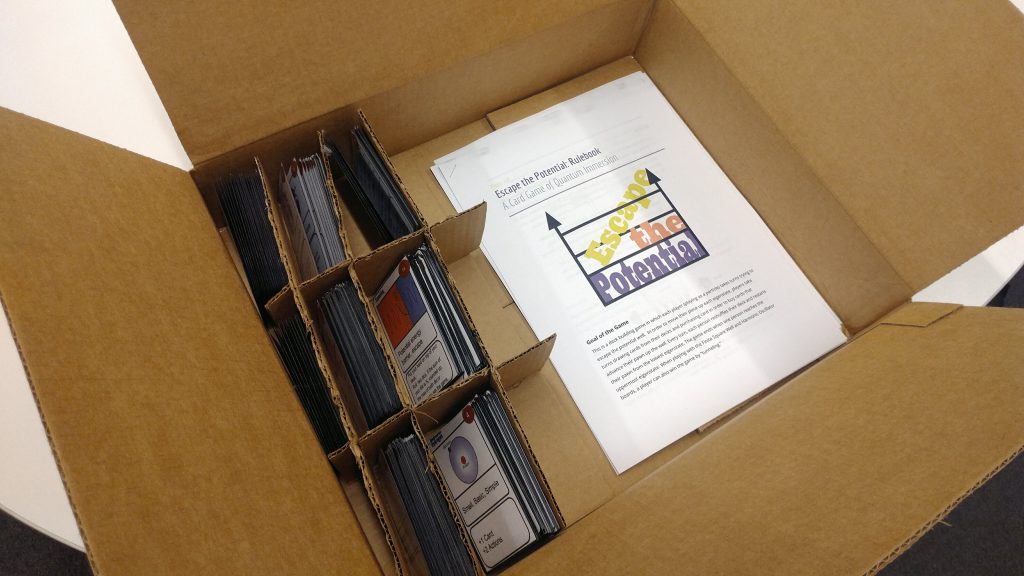What We Made
Escape the Potential is a card game focused on teaching high school and early college physics students about concepts from quantum mechanics. More specifically, the game is focused on presenting students with an introduction to the many mathematical concepts that come up in quantum mechanics as well as some of the more recent technological achievements related to quantum mechanics. This Rule Book outlines the basic rules of the game. Additionally, there is an additional card appendix that is included in the game. The card appendix has a short paragraph descriptor of each concept listed on the cards. Below are images of the cards and game boards which you can cut out in order to play the game. Maddy(see QM–>Maddy) and I worked on this project together, and she handled more of the pedagogical issues of how to best present information to the students playing the game. I focused on making the cards and writing out the rules of the game.
Outcome of Playing Escape the Potential
Students who play this game should come away with new knowledge about quantum mechanics after playing. While it is possible to play the game without learning the concepts underlying each card, the game exists as an educational tool, and this aspect of the game should be included when playing the game. We wanted the game to be an active learning process where the game encouraged students to learn about the theory of the cards without forcing it onto them. By including a card index in the game, we hope that the students familiarize themselves with the repetitive usage of the terms and concepts in the game. Here is a lesson plan for the game which can be provided for teachers so as to make the use of the game in the classroom as seamless as possible. See Maddy’s post for more information on the pedagogical goals of the game.
Playing the Game
While the rule book has all the rules that are needed for playing the game, here is a quick run down. Each player starts off with a deck containing 3 Blackbody Radiation cards and 2 Wavefunction cards. Each turn, players play cards trying to move up the eigenstates of the well(which correspond to the energy levels of the well) and earn Eigencoins for however high up the well they are. They can then buy cards to add to their deck to move higher up the well until the game ends when a player escapes or tunnels out(only applicable to finite wells).
In the gallery below are images of Mike (Thank you!) starting to play the game. While not pictured, there are students who were very helpful in providing us with feedback about the game. As a result of the play testing, we had changed several of the rules and tried to focus the game’s mechanics and change a few of the rules. If anyone wants to take a study break, the game is available to play in SP 201.1, where it is located on the top shelf of the book library.
- Not included in the picture are the “Eigencoins” used as currency in the game. They are large silver coins.
Final Thoughts
I found the process of building Escape the Potential to be an incredibly rewarding experience. Not only did it force me to learn about the essence of each physics concept, but it also allowed me to be creative during a stressful time of the year. Coming up with the concept of the game was a little difficult, as we knew we wanted to use cards and that we also wanted to come up with an original game, but weren’t exactly sure where to start. Spitballing ideas and playing other games was what took us to the current design of the game. Just as Escape the Potential does, the process of creating the game was itself an active learning process which allowed us to learn and understand quantum mechanics moreso than just reading a book about the concepts. Working with Maddy taught me a great deal about pedagogical goals when implementing a game that I would not have thought of by myself. By keeping the game educational, Maddy showed me why including certain topics are important and why some topics should be saved until the students have learned more about physics. Ultimately, we were able to come out of the project with a tangible game that can be kept and played in the future.
Acknowledgements
The game is modeled after the board game Dominion, which follows a very similar game progression, except another type of card, victory cards, is introduced into the game.
All images used in the game came from Wikimedia and fall under the Creative Commons Attribution 2.0 Generic License, which allows for noncommercial reuse of the images.

